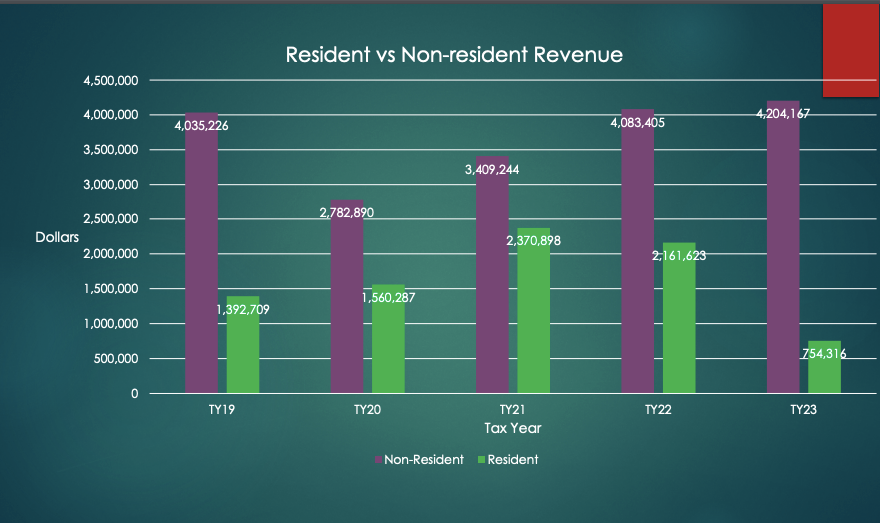Council Hears Presentation on Income Tax
City officials appear poised to ask voters to renew the income tax before it sunsets in 2031.

By Lucas Day
The city is roughly halfway through the 12-year period it is approved to collect an income tax from residents and people who work in East Lansing. At the March 18 City Council meeting, council heard a presentation about the impacts of the income tax so far.
What is the East Lansing income tax?
In 2019, East Lansing voters approved an income tax, primarily to help the city pay down its unfunded pension liability. The tax is set to sunset at the end of 2030, but the city appears poised to ask voters to approve an extension. City Manager Robert Belleman recently told ELi he sees the tax as a necessity as the city faces significant financial challenges.
The income tax is 1% on residents and .5% on non-residents who work in East Lansing. City officials have said the tax benefits residents because it forces Michigan State University employees to pay into East Lansing city government, as the university does not pay property taxes. Before the tax passed in 2018, MSU’s highest ranking employees lobbied against it.
When the income tax was approved, it came with a five mill reduction to property taxes. The income tax reimburses the general fund for those five mills lost and covers costs to administer it. After that, 60% of the remaining revenue is used to pay down the city’s unfunded pension liability, 20% goes to infrastructure projects and 20% is dedicated to public safety.

At the March 18 meeting, Councilmember Mark Meadows said the tax was structured this way to win over voters after a similar income tax proposal was rejected by East Lansing voters in 2017. After voters rejected the tax, the city surveyed residents on a tax structure they would support. The 60/20/20 structure was included in the proposal in 2018, which voters supported.
“[Residents] were willing to pay an income tax if they knew what the money was going to go for,” Meadows said.
The numbers: How much is being raised by the income tax and how those funds are being spent.
At the March 18 meeting, City Treasurer Andrea Smith gave a presentation on the income tax, sharing that the city is projected to bring in just under $16 million from the tax this year.
If Smith’s projection is correct, it will mean the city has collected roughly $16 million from the tax in three consecutive fiscal years.
A key figure highlighted by Smith is the payments made by residents versus non-residents. In tax year 2023, residents paid roughly $7.4 million and non-residents paid around $4.2 million.

City officials have argued that the income tax’s benefits are more pronounced to residents because of the accompanying property tax reduction.
As part of the presentation, Smith shared a graph showing payments by residents and non-residents when the property tax reduction is subtracted from the amount paid by residents. This shows a net payment of just over $750,000 by residents in tax year 2023, while the non-resident amount remains at $4.2 million.
The revenue generated by non-residents versus residents figures to be a key point of advertisement for the city as it gears up to ask for a renewal on the tax. Residents will have a vote on the renewal, while non-residents will not.

At last week’s council meeting, Belleman announced that the pension plan was 67% funded at the end of 2023, a 4% increase from the end of 2022, and up from 52% at the city’s low-point at the end of 2019.
The city will have to continue to invest heavily into the pension fund, as more employees draw from the pension plan than pay into it. Smith said the city has 295 active employees who could receive a pension, 407 retired employees receiving benefits and 117 employees who have left the city ranks but are not yet old enough to receive pension payments.
Smith quickly went through slides showcasing how the rest of the income tax revenue has been spent.
The city’s Department of Public Works mostly used funds on street and utility projects. The Parks and Recreation Department spent money on trails and parks projects, upgrades to the Hannah Community Center and Aquatic Center, and improvements to the softball and soccer complexes.
The police and fire departments mostly use the income tax revenue on wages and general operating costs. Notably, the presentation highlighted that the income tax helps pay for police overtime costs, which have been considerable in recent years as ELPD struggles with staff vacancies.
